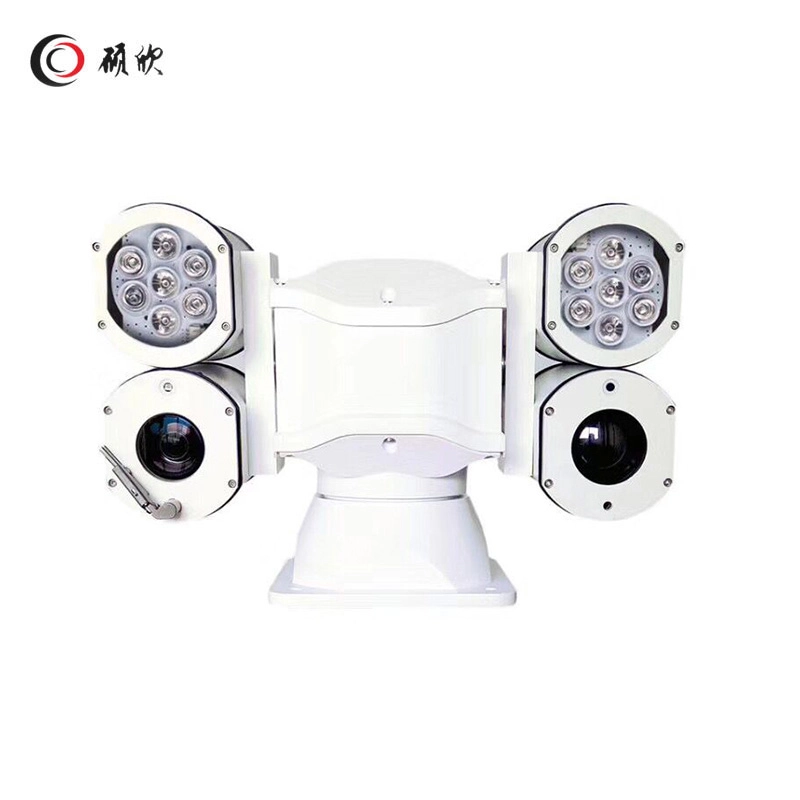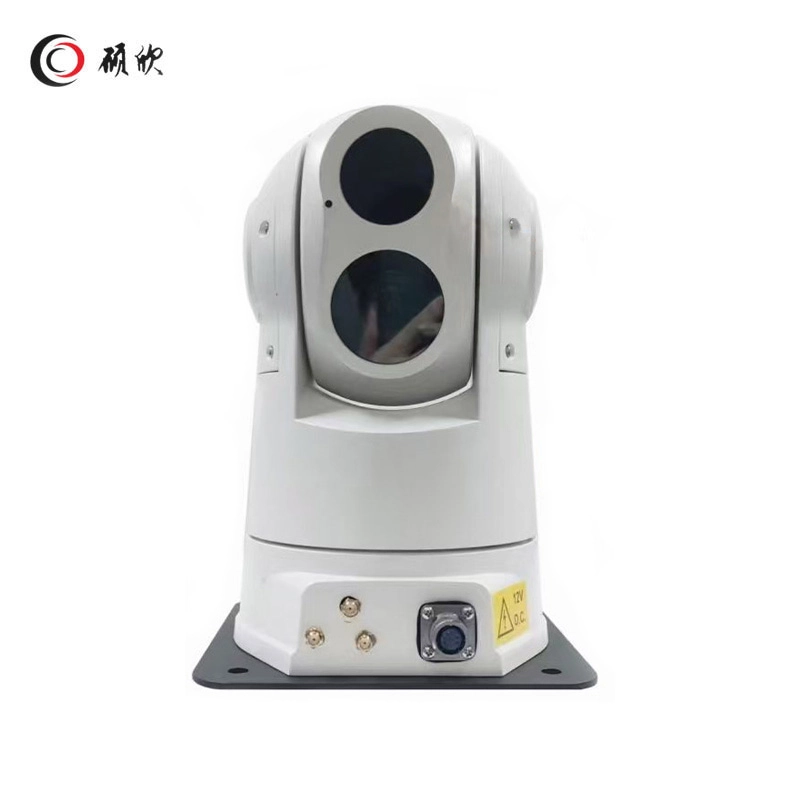At first glance, infrared (IR) cameras and thermal cameras might seem similar since both work with infrared radiation. However, they serve distinct purposes and operate on fundamentally different principles. The key difference lies in what they detect: standard IR cameras capture reflected infrared light (like a night vision camera), while thermal cameras detect heat energy emitted directly by objects. This fundamental distinction affects how they’re used—IR cameras excel in low-light surveillance and industrial inspection, whereas thermal cameras provide temperature-based imaging for applications like firefighting, building diagnostics, and medical thermography. Let’s explore these differences in detail.
How Infrared Cameras Help Different Jobs
Infrared cameras are really useful in many areas because they spot heat and show temperature changes. In repair work, they find hot spots in machines or wires, which helps stop breakdowns. In building jobs, they check for places where heat leaks out, like gaps in walls or windows.
In health care, these cameras help doctors see swelling or blood flow issues by checking body heat changes. Also, for security, they’re awesome for seeing in the dark or watching places when it’s hard to see, like at night.
What Makes a Thermal Camera Different?
The Tech Behind Heat Pictures
Thermal cameras are a special type of infrared camera built to take super clear heat pictures. They use sensors called micrometeorites, which don’t need cooling, or photon detectors, which do. These sensors notice tiny heat changes from objects. Compared to regular infrared cameras, thermal cameras are better at seeing small temperature differences and give sharper pictures.
Many new thermal cameras can mix regular light pictures with heat pictures. For example, bi-spectral long-range thermal imaging PTZ cameras use both heat and regular lenses. This lets users switch views or combine them to understand what’s happening better.
Main Uses of Thermal Cameras in Different Areas
Thermal cameras are used a lot in jobs needing exact heat measurements or watching big spaces. In firefighting, they help find hot spots in smoky areas or see how fires spread. They’re also key in factories for checking machines that get very hot.
For security, PTZ thermal cameras are great for watching borders or fences. They spot people by their body heat, even in total darkness or bad weather. In animal studies, these cameras help track creatures at night without scaring them.
Are There Things Both Cameras Share?
How They’re Alike in What They Do
Infrared cameras and thermal cameras have a lot in common because both use heat energy to work. They show heat differences and help understand how warmth spreads. This makes them awesome for measuring temperatures without touching anything.
Both can also have neat features like pan-tilt-zoom, or PTZ, to cover big areas. Bi-spectral long-range thermal imaging PTZ cameras are a good example. They mix heat and regular light pictures, so users can watch wide spaces and zoom in for details.
Places Where Both Can Be Used
There are lots of jobs where both infrared cameras and thermal cameras work well, either together or alone. For example, when checking buildings for energy savings, either can spot heat leaks or weak insulation by showing where warmth escapes.
In police work or rescue missions, these cameras find people by their body heat in foggy or dark places. In factories, both help check machines for hot spots that might mean trouble, keeping things running smoothly.
Even though infrared cameras and thermal cameras have some differences, their shared abilities make them super important for jobs where knowing about heat is key.
Why Pick a PTZ Thermal Camera for Your Needs?
Why Pan-Tilt-Zoom Features Are Great for Heat Pictures
PTZ thermal cameras are awesome because they move and zoom in cool ways. They can turn side to side, tilt up and down, and zoom close to see specific spots. This makes them perfect for watching big areas or focusing on important places without moving the camera itself.
The mix of heat pictures with PTZ features makes these cameras really helpful. For example, bi-spectral long-range thermal imaging PTZ cameras use both heat and regular light pictures. Users can switch views or combine them for clearer details. This helps spot, recognize, and follow things or people, even in tough places.
These cameras are also great at seeing far with clear pictures. Their zoom lets users check out distant stuff while keeping things sharp. This is super useful for things like border watching or factory checks over big spaces.

Jobs Where PTZ Thermal Cameras Shine
PTZ thermal cameras are must-have tools for many jobs because they’re flexible and take great pictures. In security, they’re perfect for watching in the dark or bad weather by spotting body heat. They’re often used for fence or border protection, catching sneaky people trying to get in.
In factories, PTZ thermal cameras help keep machines in good shape. They spot hot parts or leaks, which stops big problems and keeps work going. For animal studies, they let researchers watch night creatures without scaring them.
Rescue teams use these cameras in emergencies, like finding people in foggy or smoky places by their heat. Firefighters also use them to find hot spots in fires, helping them make quick choices and stay safe.
How Can Shuoxin’s Products Make Your Work Better?
Why Shuoxin’s Smart Cameras Are Awesome
Shuoxin makes top-notch cameras that help people in many jobs. Their bi-spectral long-range thermal imaging PTZ cameras use the latest tech to work great in hard places.
One big plus is their ability to mix regular light and heat pictures in one camera. This helps users see both kinds of images at once, making it easier to understand what’s going on. It’s super helpful for jobs needing clear spotting and checking.
Shuoxin keeps coming up with new ideas, like their bi-spectral dome PTZ cameras. These give amazing picture quality and work for lots of tasks, like security, factory checks, or watching nature.
Their cameras are also tough. They’re built to handle bad weather, like rain or super hot or cold days, so they keep working no matter what.
Recommended Product: Shuoxin PTZ Thermal Camera
Among Shuoxin’s cool products, the Thermal PTZ camera is a top pick for people wanting dependable, easy-to-use cameras. It mixes awesome tech with simple features to work really well.
The Thermal PTZ camera can see far, which is great for things like border watching or big factory checks. Its bi-spectral imaging tech gives clear heat and regular pictures.
With its pan-tilt-zoom features, this camera covers wide areas and zooms in on specific spots with ease. Its sharp sensors keep pictures clear, even when zoomed in a lot.
Plus, the Thermal PTZ camera is super strong. It works in tough weather, like heavy rain or extreme heat, without losing picture quality.
By picking Shuoxin’s Thermal PTZ camera, people can make their work easier and better, using top tech made for today’s tough jobs.
FAQ
Q1: What makes a bi-spectral long-range thermal imaging PTZ camera special?
A: A bi-spectral long-range thermal imaging PTZ camera uses both heat and regular lenses. It gives clear pictures from far away, even in dark or tough conditions. Users can switch views for better monitoring.
Q2: How does AI make PTZ thermal cameras better?
A: AI adds smart features like face recognition, object tracking, and noticing odd actions. This helps cameras spot problems on their own and predict issues, making work easier for people.
Q3: Are Shuoxin’s PTZ thermal cameras good for outdoor use?
A: Yes, Shuoxin builds cameras with strong cases. They work well in rain, wind, or other harsh weather, making them great for outdoor jobs.


